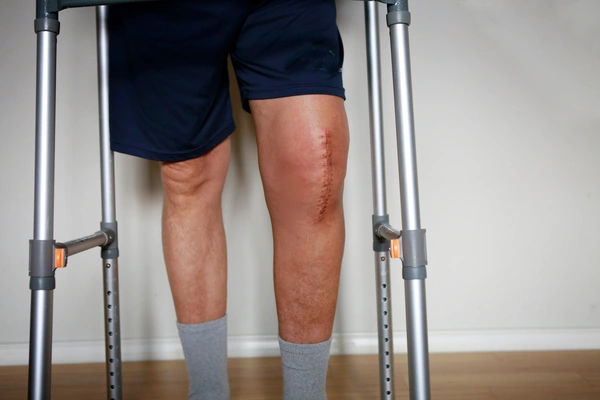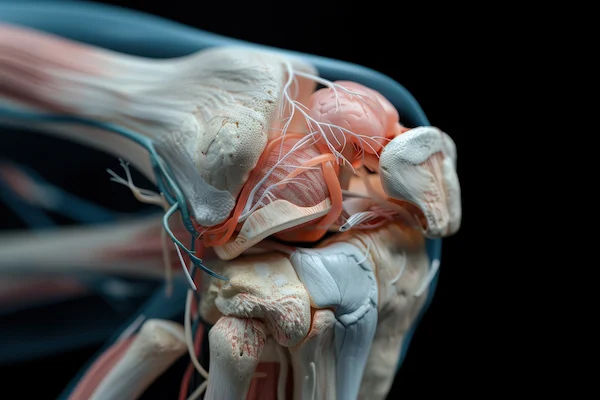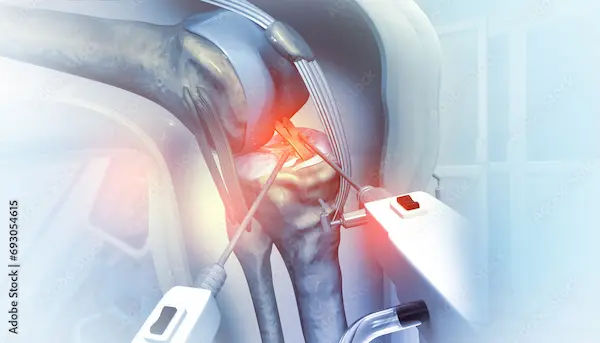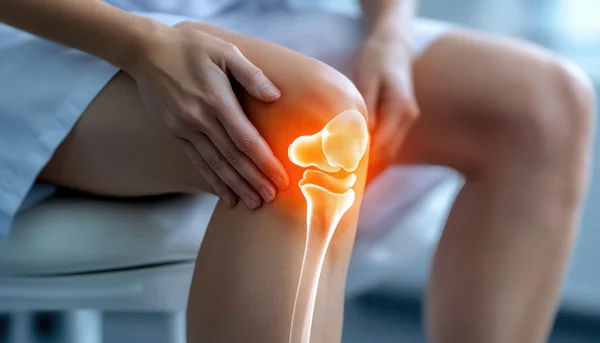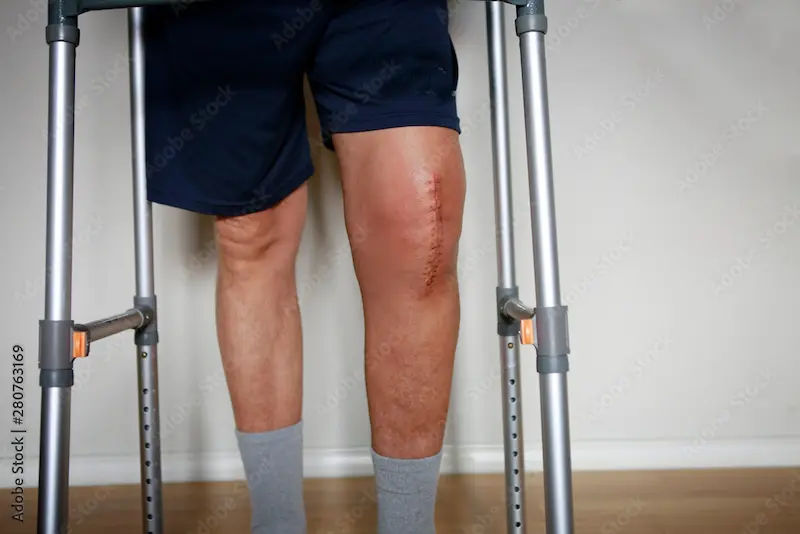Your Ultimate Guide to Knee Replacement Recovery Timeline & Tips
Discover the complete knee replacement recovery timeline, from pre-surgery preparation to long-term healing, with essential tips for pain management, physiotherapy, and daily life.

Written by Dr. J T Hema Pratima
Reviewed by Dr. Shaik Abdul Kalam MD (Physician)
Last updated on 22nd Sep, 2025
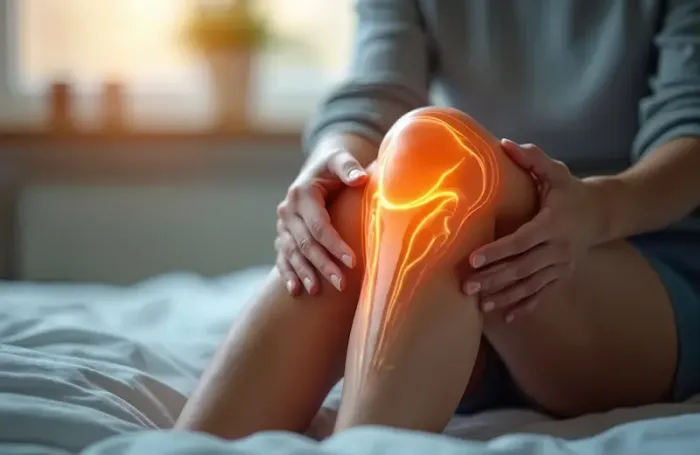
Introduction
Undergoing knee replacement surgery is a significant decision, a commitment to trading chronic pain and stiffness for a future of improved mobility and a more active life. While the surgery itself is a crucial step, the true journey begins afterwards with knee replacement recovery. This process is a marathon, not a sprint, requiring patience, dedication, and the right knowledge. This comprehensive guide will walk you through every stage of your recovery, from pre-surgery preparation to long-term wellness. We’ll provide a clear timeline, essential tips for managing at home, and insights to help you navigate this transformative period with confidence, ensuring you get the most out of your new knee.
Before Surgery: Setting the Stage for Success
A successful recovery starts long before you enter the operating room. Taking proactive steps can significantly influence your healing speed and overall experience.
Pre-Hab: Strengthening Before the Operation
"Pre-habilitation," or pre-hab, involves exercises to strengthen the muscles around your knee—particularly the quadriceps and hamstrings. Strong muscles provide better support for the new joint, which can lead to less post-operative pain, improved stability, and a faster return to function. Studies have shown that patients who engage in pre-hab often experience shorter hospital stays and better early outcomes.
Preparing Your Home for a Smooth Transition
Your home environment needs to be safe and accessible. This is a critical tip often overlooked.
• Create a "Recovery Central": Set up a comfortable chair with firm seating and arms on the main floor. Have a small table nearby for essentials like water, medications, your phone, and reading materials.
• Clear Pathways: Remove loose rugs, electrical cords, and clutter to create clear walking paths to the bathroom and kitchen.
• Secure Handrails: Install grab bars in the shower/tub and near the toilet. Ensure handrails are secure on all stairways.
• Arrange Help: Line up friends, family, or a helper for the first few weeks to assist with cooking, cleaning, and errands.
The Knee Replacement Recovery Timeline: What to Expect
The First 24-72 Hours: Hospital Stay & Initial Therapy
You will be encouraged to stand and walk with a walker and assistance within hours of surgery. The focus is on pain control with medication, preventing blood clots with compression devices or medication, and beginning simple physiotherapy exercises like ankle pumps and quad sets to stimulate circulation.
Weeks 1-3: The Early Days at Home
This phase is often the most challenging. Swelling and pain are managed with medication, ice, and elevation. You’ll work on achieving full knee extension (straightening) and gradually increasing flexion (bending) with home exercises. Consistent use of your walker is crucial for safety. The goal is to manage discomfort and perform basic daily activities.
Weeks 4-6: Regaining Strength and Motion
You’ll likely transition from a walker to a cane. Outpatient physiotherapy intensifies, focusing on building strength, improving balance, and increasing your range of motion. Swelling begins to subside with consistent ice therapy, and your endurance for walking and daily tasks will noticeably improve.Consult an Orthopaedician for Personalised Advice
Months 2-3: Building Endurance and Confidence
By now, most people feel significantly better. Pain is minimal, and stiffness continues to decrease. Therapy focuses on more advanced strengthening and functional activities. Many people return to driving (if it's the non-surgical leg) and sedentary work. This is where the hard work truly starts to pay off.
6 Months and Beyond: Long-Term Healing & Activity
Full recovery can take up to a year or more, but by 6 months, you should enjoy most low-impact activities like walking, swimming, and cycling. The internal healing process continues as the bone fully grows into the implant. Continued strength training is key to protecting your new joint for the long haul.
Essential Elements of a Successful Recovery
Mastering Pain Management Strategies
Effective pain management after knee replacement is not about eliminating pain entirely but controlling it to allow for movement and therapy. This includes:
• Medication: Take prescribed pain relievers on schedule, especially before physiotherapy.
• Ice Therapy: Applying ice packs for 15-20 minutes several times a day is one of the most effective ways to reduce swelling and pain.
• Elevation: Prop your leg up above the level of your heart whenever you are resting to drain fluid from the knee.
The Non-Negotiable Role of Physiotherapy
Physiotherapy is the cornerstone of recovery. Your therapist will guide you through a personalised set of exercises designed to restore function. Skipping sessions or not doing home exercises is the fastest way to compromise your results, potentially leading to stiffness and scar tissue formation.
Nutrition & Hydration: Fuelling Your Healing Body
Your body needs resources to heal. Focus on:
• Protein: Essential for muscle and tissue repair. Include lean meats, fish, eggs, beans, and Greek yoghurt.
• Fibre: Pain medications can cause constipation. Eat fruits, vegetables, and whole grains.
• Hydration: Drink plenty of water to help with circulation and overall cellular function.
• Vitamin C & Iron: Support collagen formation and healthy blood cells for healing.
Navigating Challenges and Warning Signs
Common Temporary Setbacks
It's normal to experience good days and bad days. Common temporary issues include swelling that fluctuates with activity, stiffness (especially in the morning), and some skin numbness around the incision. Patience is key.
Red Flags: When to Call Your Doctor
While some discomfort is expected, certain symptoms require immediate medical attention. If you experience any of the following, consult a doctor online with Apollo24|7 for further evaluation:
• Signs of Infection: Increasing redness, warmth, or swelling around the incision; foul-smelling drainage; fever above 100.4°F (38°C).
• Symptoms of a Blood Clot: Severe calf pain unrelated to the incision, tenderness, redness, or unusual swelling in your calf, ankle, or foot.
• Chest pain or shortness of breath.
• Sudden, severe pain that is not relieved by rest, ice, and medication.
Conclusion: Embracing a Life with Less Pain
The journey of knee replacement recovery is demanding, but the destination—a life with significantly reduced pain and restored ability to enjoy daily activities—is overwhelmingly worth it. By understanding the timeline, committing to your physiotherapy, and diligently managing your pain and swelling, you are investing in your future mobility. Remember, progress is cumulative; every time you ice your knee, complete your exercises, or take a few more steps, you are moving forward. Stay positive, lean on your support system, and keep your eyes on the goal: returning to the life you love, with greater ease and comfort. If your recovery progress stalls or you have persistent concerns about your pain levels or mobility, booking a physical visit to an orthopaedic specialist with Apollo24|7 can provide personalised guidance and peace of mind.
Consult an Orthopaedician for Personalised Advice
Consult an Orthopaedician for Personalised Advice

Dr. Anil Pradeep Jadhav
Orthopaedician
23 Years • MBBS MS (Ortho)
Nashik
Apollo Hospitals Nashik, Nashik
(25+ Patients)

Dr. Manoj Dinkar
Orthopaedician
15 Years • MBBS, Dip (Orthopaedics)
New Delhi
THE DOCTORS NESST, New Delhi
Dr. Anil Sharma
Orthopaedician
42 Years • MBBS, MS Orthopedics
New Delhi
AAKASH MEDSQUARE, New Delhi

Dr. Padam Singh Gautam
General Physician/ Internal Medicine Specialist
43 Years • M.B.B.S (WARDHA M. S.), F.A.G.E. (MANIPAL), F.A.I.M.S. (Pb.), M.A.I.M.S. (Pb.), M.R.S.H. (LONDON)
Noida
Dr Padam Singh Gautam Fracture Clinic, Noida
(50+ Patients)
Dr. Suraj Prakash
Orthopaedician
5 Years • MBBS, MS (Ortho)
Bengaluru
Apollo Clinic, Indiranagar, Bengaluru
Consult an Orthopaedician for Personalised Advice

Dr. Anil Pradeep Jadhav
Orthopaedician
23 Years • MBBS MS (Ortho)
Nashik
Apollo Hospitals Nashik, Nashik
(25+ Patients)

Dr. Manoj Dinkar
Orthopaedician
15 Years • MBBS, Dip (Orthopaedics)
New Delhi
THE DOCTORS NESST, New Delhi
Dr. Anil Sharma
Orthopaedician
42 Years • MBBS, MS Orthopedics
New Delhi
AAKASH MEDSQUARE, New Delhi

Dr. Padam Singh Gautam
General Physician/ Internal Medicine Specialist
43 Years • M.B.B.S (WARDHA M. S.), F.A.G.E. (MANIPAL), F.A.I.M.S. (Pb.), M.A.I.M.S. (Pb.), M.R.S.H. (LONDON)
Noida
Dr Padam Singh Gautam Fracture Clinic, Noida
(50+ Patients)
Dr. Suraj Prakash
Orthopaedician
5 Years • MBBS, MS (Ortho)
Bengaluru
Apollo Clinic, Indiranagar, Bengaluru
More articles from Total Knee Replacement
Frequently Asked Questions
1. How long does it take to walk normally after a knee replacement?
Most people can walk without assistive devices like a walker or cane around the 4-6 week mark. However, achieving a fully normalised gait pattern (walking without a limp) can take several months of dedicated physiotherapy to build strength and retrain your muscles.
2. What is the best way to sleep after knee surgery?
The best sleeping position is on your back with your operated leg elevated on a few pillows to minimise swelling. If you are a side sleeper, you can try sleeping on your non-operative side with a pillow between your knees to keep your new knee aligned and prevent painful twisting.
3. When can I drive after my knee replacement?
If you had surgery on your left knee and drive an automatic car, you may drive as soon as you are off strong pain medication and can comfortably and safely control the vehicle, often around 2-4 weeks. For right knee surgery, the timeframe is typically longer, around 4-6 weeks, once you have regained sufficient strength and reaction speed.
4. Are there permanent restrictions after a knee replacement?
Yes, most surgeons recommend avoiding high-impact activities like running, jumping, and contact sports to protect the implant from excessive wear and loosening. Low-impact activities such as walking, swimming, cycling, golf, and doubles tennis are highly encouraged for long-term health.
5. How long will the swelling last after knee replacement?
Some degree of swelling is normal for 3-6 months and can linger subtly for up to a year. Swelling is your body's natural response to healing and will fluctuate with your activity level. Consistent ice therapy and elevation are the best ways to manage it.
